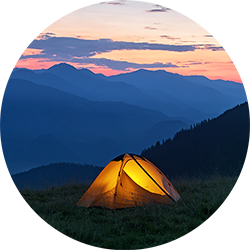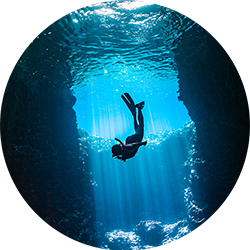![]() Prakash Jaiswal
Manali to Leh Bike Trip From Delhi
Prakash Jaiswal
Manali to Leh Bike Trip From Delhi
"the experience was awesome. The whole thing organized by Thrillophilia was great. Our tour operator Jigmet sir and the whole crew were 1 no. SHAMAAASS. Julley.
11 July 2019
![]() Vedant Rander
Manali Leh Srinagar Bike Trip
Vedant Rander
Manali Leh Srinagar Bike Trip
We went for Manali to srinagar Bike tour. It was the best bike trip of my entire life It all started with the person named Shubham from thrillophilia who helped me in selecting the best trip and processed with my booking, all thanks to him! Without him I wouldn’t have been able to experience the best trip of my life. On arrival there, we met our tour guide Tani and our Mechanic Shashi about whom I have read a lot at thrillophilia reviews. These 2 guys were so supportive during the entire tour that no matter what happened they were always there to look after us. They always made sure we are safe and we are following them and there is no overtaking taking place. Tani, the tour guide, one chilled out person he is! Make sure you get him as your tour guide and Shashi as the mechanic as these guys will always make sure that they are there for you no matter what. And in the end, it’s all the Main man behind everything, Jimmy Sir. Thanks a lot Sir for making me experience the best trip of my life! Without you and your team this wouldn’t have been possible. Thanks for helping us out in every way possible.
The roads here are difficult terrain to ride on. You gotta be careful. You gotta carry your gum boots during water logging which is the most difficult to cross. But these guys made sure that we were all safe and had sound health till we reached home. Not even a single person was hurt. Our group was a mixture of all age groups, I’m fact we even got to meet 2 people From the Indian navy as well. One mad kickass experience! Unbelievable. Reaching the worlds highest Pass, Khardungla Top, was the highest achievement of my life till date which happened on this trip!
And if at all you wish to go, don’t forget to ask Tani and Shashi as your tour guide and mechanic, and go only through Jimmy Sir as he has the best team!
Thanks a lot to everyone out there for which I thought the best way would be to write at thrillophilia reviews.
16 July 2019
![]() Sudip Ghosh
Leh Ladakh Group Tour Package With Camping
Sudip Ghosh
Leh Ladakh Group Tour Package With Camping
We had a wonderful experience with Thrillophilia
Out tour was Leh-Ladakh 6N7D, which includes Leh Sightseen, Nubra Valley Overnight Stay, Pangong Overnight Night.
1. First of all you should know that Thrillophilia doesn't have its own Travel Team. Thrillophilia actually linked up with several local Travel Agency. Once your Tour is booked Thrillophilia tagged one local Travel Agency for your Tour and that particular travel agency will take care of your entire tour.
Our travel manager is Lobzang Tseldon. She is very helpful and you will not face any problem in your entire tour.
1. Hotel provided in Leh: Ladakh Heights.
The hotel was very good,neat and clean.It is a new hotel so you don't found any pics in the internet. But lobzang will send you the pics of the Hotel. There is a canteen within the hotel where you will be having complimentary breakfast and dinner.
Non Vegetarian please let Lobzang know that you want non-veg items as well.they generally prepare veg items only.but on request they will provide you omlette in breakfast and chicken/mutton in dinner.
So if anyone wants to book Thrillophilia please ask Thrillophilia to tag you to the travel agency that offers non veg items too.
The Hotel Ladakh Heights is a bit far from the main city but don't worry Lobzang will provide you car for visit to Leh market whenever required and she will not charge you for that. You will get a beautiful view from this hotel but if you want to stay near the main city you will not get any view from the hotel.
2. The stay at Nubra Valley was awesome. They have Royal Camp in Nubhra and it's is a nature-friendly camp. You will love it, I can guarantee you.
3. They stay at Pangong was okay. You can understand that at that altitude you will not get luxury.so the camp provided at Pangong was good for 1 night stay.
Overall my experience with Thrillophilia was very good. We enjoyed a lot. Thanks a lot to Lobzang Tseldon for the wonderful arrangements of our tour.
![]() Shubham Srivastava
Manali to Leh Bike Trip From Delhi
Shubham Srivastava
Manali to Leh Bike Trip From Delhi
"Trip was really awesome. I feel everyone should consider this trip at least once in their lifetime. My eyes were never tired of looking around at such beautiful and scenic views. I would like to extend my special thanks to Tour leader Mr. Jigmet Tandar. He is highly trained professional. The way he lead the tour made us have more fun. Thanks to the whole crew Jigmet, Stanzin, Wangyal, Kaushal, Tundoop. Made a lot of new friends. One suggestion to Thrillophilia team: Since this is not just any casual trip that anyone can go through please consider keeping a screening process for people who opt for it. This is one of the most extreme adventures where your body and mind will go through a lot of challenges, one can successfully complete this trip only if they are determined and well prepared."
03 June 2019
![]() Vedaansh Bhargava
Leh Bike Tour Adventure with Camping
Vedaansh Bhargava
Leh Bike Tour Adventure with Camping
An exhilarating life-changing experience. If you are able bodied, a biking lover, a landscape / scenery admirer and a crazy adventure seeker, this is a must try for life. Our group of bikers were fun-loving yet very responsible riders. We became friends on the very first day and all of us enjoyed every moment, giving mutual respect at every instance, having each other's backs at every dangerous turn. Even elderly couples in the group made amazing memories with all the young folks! The Ladakhi food, the heritage site visits, the campfire dancing, the photos, the market shopping, the music, the hikes, the snow, even the adorable mountain dogs, furry yaks and double-hump camels, every-bit was amazing. The road team was extraordinary, specially Tani (captain) and Shashi (bike repairman). They were very friendly, accommodating, knowledgeable and also helpful at every step. We had a truck carrying our luggage all along, running behind us all through the roads, making sure no one is left behind. Jigmet has a lot of local connections, so you will be well taken care of at camps and hotels (even Jain food, on request).
24 October 2020
![]() Saurabh Dixit
Leh Ladakh Group Tour Package With Camping
Saurabh Dixit
Leh Ladakh Group Tour Package With Camping
I had a wonderful trip with Thrillophilia. Hotel provided in Leh was clean and good.
All sightseeing places covered as per itinerary. The camping stay at Nubra Valley and near Pangong lake was awesome. We enjoyed a lot and overall experience was great.
![]() Bhushan Gandhi
Sham Valley Trek
Bhushan Gandhi
Sham Valley Trek
The Sham Valley Trek was one of the most enjoyable treks I have undertaken in the last few years, and all the credit goes to Thrillophilia. The booking experience was extremely smooth and I would highly recommend this company for all your travels in the valley.
17 November 2019
![]() Kaustubh Bondre
Manali Leh Srinagar Bike Trip
Kaustubh Bondre
Manali Leh Srinagar Bike Trip
It was an awesome experience. Completed the tour in July 2019. We had booked for 8 persons on Thrillophilia. The facilities were good, Tani-the tour guide, was superb. Amazing tour, to say the least. I have penned down my entire experience of Ladakh bike tour on my blog. Sharing the link here.
17 November 2019
![]() Hari Hari
Leh Ladakh Bike Trip with Camping at Nubra & Pangong Lake
Hari Hari
Leh Ladakh Bike Trip with Camping at Nubra & Pangong Lake
When we made the booking for 6-days trip to Ladakh via Thrillophilia, we had a lot of questions in our mind on how it's going to turn out, especially on whether it's a suitable honeymoon destination even for those who love a bit of adventure. That is primarily because the reviews of Ladakh were a bit scary. Almost all of the people who wrote reviews had a lot of things to warn you about- the extreme climate, sudden decrease in Oxygen levels, deserted/uninhabited places where it's difficult to get some help from anyone in case of any issues and so on. And there were some people who wrote bad reviews about Thrillophilia for some negative experiences they had to endure from the operators. But it was reassuring to see how Thrillophilia answered all the reviews, even the negative ones. They clarified how they assign tour operators based on customer reviews and in case of any negative experiences from the operators, there is not much Thrillophilia can help with apart from not assigning those operators anymore. As we were getting immediate response from Amit on all our queries on a timely basis, we decided to book the package.
Cutting to the chase, we were contacted by the operator(Thupstan) the day before our arrival and he ensured that there was a taxi to pick us up on time. The tour guides and the driver of the backup vehicle he assigned for our group were so experienced that all we had to do was to keep riding until they ask us to stop. The halts were all well planned that we didn't have to worry about anything. And they were so approachable in case of any issues. And whenever we rode for a long time, they would come and inspect each bike and fixed any issues immediately. They were always willing to go the extra mile to make us comfortable.
Let me quote an instance here - The driver of the backup vehicle had an issue with Blood Oxygen level when we reached Pangong. We had enough stock of Oxygen cylinders in the backup vehicle. But he didn't consider using it and hence took one of the bikes and rode to where he could find a pharmacy to get an Oxygen cylinder for himself. When one of us asked him on why he didn't use one of the cylinders that we had carried, he told us that the cylinders are just for our use and himself or any of the guides won't use that. Such was the concern they had for everyone in the group.
In case anyone reading this still has a question regarding whether it's a suitable place for couples, the answer is YES. The accommodation they provide is suitable for couples as well. Even the tents are nice and safe.
I could go on like this and I never thought this review is going to be this long when I started writing it. As others have mentioned in the reviews, it's such a beautiful destination and the experience is awesome. If you are thinking of taking a trip to Ladakh, go ahead and embark on this beautiful journey with Thrillophilia. I'm sure that you won't regret it.
![]() Tshering Tshering
Leh Ladakh Group Tour Package With Camping
Tshering Tshering
Leh Ladakh Group Tour Package With Camping
"it was a very well organized trip,the hotel was very good,the tent in nubra was lovely and the food was good too..overall a good experience "




